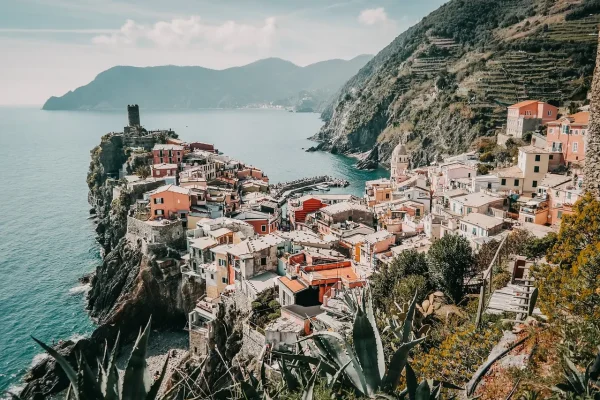Photographs have changed from a treasured few moments in time to a million images sitting on our phones, unregarded. What is it like to go back and look at photography as it was meant to be – an art that lets us hold onto a moment forever? Read on for our take on mindful, meaningful photography.
When you’re in the thrall of an indescribable travel experience, it’s natural to want to try and capture the moment. Photographs are the closest one gets to such a thing. Finding the right gear and lens is the easy part – but knowing when to snap the shutter is what distinguishes a good photograph from a great one. In this piece, we thought of delving into our inspiration and love for the art of photography, and the chance to relive our most incredible moments through photographs.
Why do we take photographs?
When we’re away somewhere for the first time, we focus on taking in as much of the place. From trying to memorize the minutest details to capturing the larger picture in front of us, photographs go a long way in cementing this first impression. Photographs like these are sensory links to a specific time and place. Picture this: we’re standing on the busiest street in Montmartre. Every inch is thronged by tourists – a mixture of ethnicities, ensembles, and faces. We raise our camera to capture the moment – maybe we follow the leading line of the road, filling the frame with the scene in front of us. Or maybe, we focus on one face in the crowd, while everything else fades into the background. Both capture the essence of that day in Montmartre, but in different ways.
Remember the basics
There are two main angles (no pun intended) involved in taking a great photograph. First, we need to know what we’re focussing on. If we’re trying to photograph the flaky crust of a cornetto, we must get close and let the subject fill the frame. However, if it is the vastness of the Uyuni salt desert that we want to remember forever, we need to shoot from a wide angle. Big or small, framing is an essential detail. The second, of course, is lighting. Photography has often been referred to as “painting
with light,” and we couldn’t agree more. Natural light is travel photography’s best friend, because it is very much a part of the moment and the memory that a photograph aims to capture. Learning how to balance shutter speed with aperture helps us make the most of the light available to us, and use it to create a dramatic picture.
Be in the moment
One might think they have a better chance of getting a good photograph simply by taking many – the law of averages, so to speak. However, there’s a lot more value in a picture that is carefully framed, measured, and mindfully shot. By grounding ourselves and being present in the moment, we are able to ‘see’ a lot more through the viewfinder, and the resultant photograph is better for it. A photograph that is shot this way is a lot more likely to capture the sound of chatter in a cafe, the fragrance of summer in the air, and the feeling of seeing a cityscape coloured by the setting sun.
Rio Carnival 2024 is not only will you witness the most spectacular show on earth, with dazzling costumes, rhythmic music and vibrant energy, but you will also have the opportunity to taste some of the most delicious street food in Brazil. In this blog, we will explore the traditional foods and drinks associated with the carnival, offering you a taste of the local culture.
Brazilian cuisine is a fusion of indigenous, European, African and Asian influences, resulting in a rich and diverse gastronomy that varies from region to region. In Rio de Janeiro, you will find some of the most popular and delicious dishes that reflect the city’s history and identity.
Rio Scenarium
Rio Scenarium is one of the most famous and charming venues in Rio’s nightlife. Located in the historic district of Lapa, this three-story building is a museum, a bar, a restaurant and a live music venue all in one. The walls are decorated with antiques, memorabilia and artworks that create a unique atmosphere.
Rio Scenarium offers a variety of dishes that showcase the Brazilian cuisine, such as feijoada (a stew of black beans and pork), moqueca (a seafood stew with coconut milk and palm oil), pastel (a fried pastry with different fillings) and coxinha (a croquette shaped like a chicken drumstick).
You can also enjoy some of the typical drinks of the carnival, such as caipirinha (a cocktail made with cachaça, lime and sugar), batida (a blend of cachaça and fruit juice) and chope (draft beer).
Assador Rios
Assador Rios is a steakhouse that specializes in grilled meats (Gaucho style) and seafood. It is located in front of the Copacabana beach, offering a stunning view of the ocean and the Sugarloaf Mountain.
Assador Rios follows the rodízio system, which means that you pay a fixed price and you can eat as much as you want from a variety of cuts of beef, pork, lamb, chicken and fish. The meats are served on skewers by waiters who slice them at your table. You can also help yourself to a buffet of salads, cheeses, breads and side dishes.
Assador Rios also has a wine cellar with more than 300 labels from around the world, as well as cocktails, beers and soft drinks.
Casa do Chef
Casa do Chef is a cozy and intimate restaurant that offers a personalized and creative dining experience. The chef and owner, Pedro de Artagão, prepares daily menus based on seasonal ingredients and his own inspiration.
Casa do Chef has only one table that seats up to 12 people. You can book the whole table for a private event or share it with other guests. The menu consists of six courses that are served with wine pairings. The dishes are a surprise until they arrive at your table, but you can expect to taste some of the chef’s signature creations, such as duck confit with orange sauce, lobster risotto with truffle oil and chocolate cake with caramel ice cream.
Rio’s Sumptuous Street Food
For those who would like to mingle with the local vibe, one of the best ways to experience Rio Carnival is to sample some of the street food that is sold by vendors all over the city. Here are some of the most popular dishes and beverages that you can enjoy during the carnival:
Pastels – A deep-fried pastry filled with cheese, meat, chicken or shrimp. It is crispy on the outside and gooey on the inside, and often served with hot sauce or ketchup.
Coxinha – A croquette shaped like a chicken drumstick, made with shredded chicken and cheese, coated in bread crumbs and fried. It is a favorite snack among Brazilians and can be found in almost every corner.
Acarajé – A ball of black-eyed pea dough stuffed with shrimp, vatapá (a creamy paste made with bread, coconut milk, peanuts and spices), caruru (a stew made with okra, onion, palm oil and shrimp) and salad. It is a typical dish from Bahia, a state in northeastern Brazil with a strong African influence.
Pão de queijo – A small cheese bread made with cassava flour and cheese. It is soft and chewy, and can be eaten plain or with butter or jam.
Brigadeiro – A chocolate truffle made with condensed milk, cocoa powder and butter, rolled in chocolate sprinkles. It is a classic dessert that is often served at birthday parties and other celebrations.
Caipirinha – The national drink of Brazil, made with cachaça (a distilled spirit made from sugarcane juice), lime, sugar and ice. It is refreshing and potent, and can be flavored with other fruits such as passion fruit, pineapple or strawberry.
Guaraná – A soft drink made from the guaraná fruit, which grows in the Amazon rainforest. It has a sweet and fruity flavor, and contains caffeine that can give you an energy boost.
But this journey isn’t just about food; it’s about the immersive experience of Rio Carnival 2024. With Away Exotics, you’ll not only savor the culinary delights but also engage with local chefs, learning the secrets of their craft. It’s a chance to understand the cultural significance of these dishes and the stories they tell. Your adventure into the world of Brazilian cuisine at Rio Carnival 2024 with Away Exotics promises to be a sensory delight. From traditional feijoada to modern culinary creations, you’ll experience the diverse flavors that make Brazil’s food culture truly unique. Don’t miss your chance to join this culinary odyssey.




